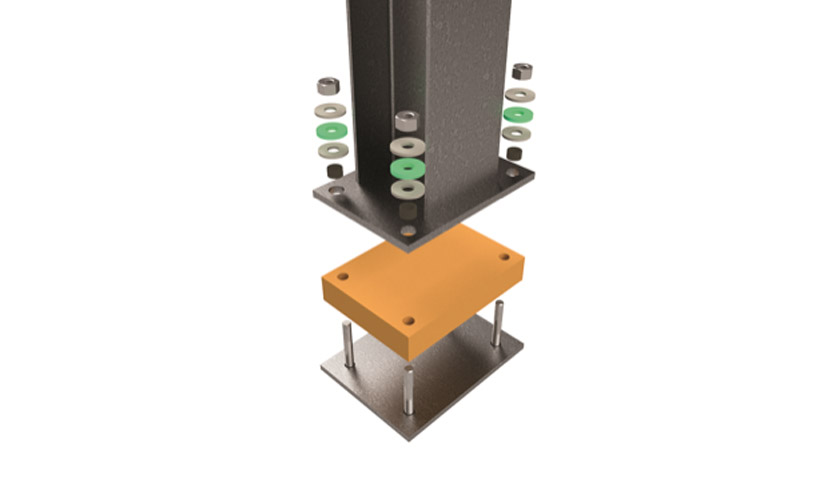Reducing thermal bridging in building envelope connections is an ongoing mission as architects and engineers strive to design and construct energy efficient buildings. Thermal bridging occurs when conductive materials provide a conduit for energy to transfer across a thermal barrier creating an energy loss and potential for condensation.
To alleviate this problem ACE Fabreeka UK has introduced Fabreeka-TIM® RF into its family of Fabreeka-TIM® thermal bridging products for the building and construction sectors.
Fabreeka-TIM® RF is a high density, closed cell rigid polyurethane foam used as an effective thermal break for a variety of applications such as column base thermal isolation for roof equipment, cold storage facilities or to reduce thermal bridging between a roof and outdoor space. It also provides column base thermal insulation and is manufactured in several densities to support a range of load conditions.
The unique properties of Fabreeka-TIM® RF make it impermeable by any type of liquid, including water and most solvents, thus suited for moisture, severe weather conditions or harsh environments. With additional qualities as a structural thermal isolation block, it is resistant to mechanical stress and has exceptional insulating qualities, which makes it a valuable asset to reduce thermal bridging in non-moment building envelope connections and cold storage applications.
Three densities are available to meet load conditions and the material can be custom waterjet cut to a particular specification, including anchor bolt holes. Products therefore arrive on site, ready to use.
For optimal thermal break performance, the area around the fastener hardware should also be taken into consideration by using thermal break washers and bushings made from Fabreeka® material.
Applications include:
- Structural column bases, especially vital in cold storage/freezer facilities.
- Tank isolation block – reduces condensation by thermally isolating cooling equipment from its supporting structure.
- Roof equipment and dunnage post support block – supports HVAC, fans, davits, anchors and other heavy equipment on building roofs while preventing heat transfer to the building interior.
- Foundation connections, i.e. slab to foundation, foundation to wall.


